Korg Pitchblack Handleiding
Bekijk gratis de handleiding van Korg Pitchblack (2 pagina’s), behorend tot de categorie DJ Gear. Deze gids werd als nuttig beoordeeld door 49 mensen en kreeg gemiddeld 4.3 sterren uit 25 reviews. Heb je een vraag over Korg Pitchblack of wil je andere gebruikers van dit product iets vragen? Stel een vraag
Pagina 1/2

Précautions
Emplacement
L’utilisation de cet instrument dans les endroits suivants peut en entraîner le mauvais fonctionnement.
• En plein soleil
• Endroits très chauds ou très humides
• Endroits sales ou fort poussiéreux
• Endroits soumis à de fortes vibrations
• A proximité de champs magnétiques
Alimentation
Branchez l’adaptateur secteur fourni à une prise secteur de tension appropriée. Evitez de brancher
l’adaptateur à une prise de courant dont la tension ne correspond pas à celle pour laquelle l’appareil est
conçu.
Interférences avec d’autres appareils électriques
Les postes de radio et de télévision situés à proximité peuvent par conséquent souffrir d’interférences à
la réception. Veuillez dès lors faire fonctionner cet appareil à une distance raisonnable de postes de
radio et de télévision.
Maniement
Pour éviter de les endommager, manipulez les commandes et les boutons de cet instrument avec soin.
Entretien
Lorsque l’instrument se salit, nettoyez-le avec un chiffon propre et sec. Ne vous servez pas d’agents de
nettoyage liquides tels que du benzène ou du diluant, voire des produits inflammables.
Conservez ce manuel
Après avoir lu ce manuel, veuillez le conserver soigneusement pour toute référence ultérieure.
Evitez toute intrusion d’objets ou de liquide
Ne placez jamais de récipient contenant du liquide près de l’instrument. Si le liquide se renverse ou
coule, il risque de provoquer des dommages, un court-circuit ou une électrocution.
Veillez à ne pas laisser tomber des objets métalliques dans le boîtier (trombones, par ex.). Si cela se
produit, débranchez l’alimentation de la prise de courant et contactez votre revendeur korg le plus pro-
che ou la surface où vous avez acheté l’instrument
.
Notice concernant l’élimination du produit (UE seulement)
Si ce symbole “Poubelle barrée” est imprimé sur le produit ou dans le manuel de
l’utilisateur, vous devez vous débarrasser du produit de la manière appropriée. Ne
jetez pas ce produit avec vos ordures ménagères. En vous débarrassant correcte-
ment du produit, vous préviendrez les dommages environnementaux et les risques
sanitaires. La méthode correcte d'élimination dépendra de votre lieu d’habitation,
aussi veuillez contacter les autorités locales concernées pour les détails.
REMARQUE IMPORTANTE POUR LES CLIENTS
Ce produit a été fabriqué suivant des spécifications sévères et des besoins en tension applicables
dans le pays où ce produit doit être utilisé. Si vous avez acheté ce produit via l’internet, par vente
par correspondance ou/et vente par téléphone, vous devez vérifier que ce produit est bien utilisable
dans le pays où vous résidez.
ATTENTION: L’utilisation de ce produit dans un pays autre que celui pour lequel il a été conçu peut
être dangereuse et annulera la garantie du fabricant ou du distributeur. Conservez bien votre récé-
pissé qui est la preuve de votre achat, faute de quoi votre produit ne risque de ne plus être couvert
par la garantie du fabricant ou du distributeur.
Precauciones
Ubicación
El uso de la unidad en las siguientes ubicaciones puede dar como resultado un mal funcionamiento:
• Expuesto a la luz directa del sol
• Zonas de extremada temperatura o humedad
• Zonas con exceso de suciedad o polvo
• Zonas con excesiva vibración
• Cercano a campos magnéticos
Fuente de alimentación
Por favor, conecte el adaptador de corriente designado a una toma de corriente con el voltaje adecuado.
No lo conecte a una toma de corriente con voltaje diferente al indicado.
Interferencias con otros aparatos
Las radios y televisores situados cerca pueden experimentar interferencias en la recepción. Opere este
dispositivo a una distancia prudencial de radios y televisores
Manejo
Para evitar una rotura, no aplique excesiva fuerza a los conmutadores o controles.
Cuidado
Si exterior se ensucia, límpiese con un trapo seco. No use líquidos limpiadores como disolvente, ni
compuestos inflamables.
Guarde este manual
Después de leer este manual, guárdelo para futuras consultas.
Mantenga los elementos externos alejados del equipo
Nunca coloque ningún recipiente con líquido cerca de este equipo, podría causar un cortocircuito, fuero
o descarga eléctrica. Cuide de que no caiga ningún objeto metálico dentro del equipo.
Aviso sobre desechos (solo para UE)
Si el simbolo del cubo de basura tachado se muestra en el producto o en el manual de
instrucciones, debe desechar el producto de una forma adecuada. No deseche este pro-
ducto con el resto de residuos domesticos. El desecho apropiado de este producto ayuda
a reducir el impacto medioambiental. El metodo correcto de desecho puede variar depen-
diendo de la localidad, por favor consulte a la agencia de medio ambiente para obtener
mas detalles.
NOTA IMPORTANTE PARA EL CONSUMIDOR
Este producto p1-ha sido fabricado de acuerdo a estrictas especificaciones y requerimientos de voltaje
aplicables en el país para el cual está destinado. Si p1-ha comprado este producto por internet, a
través de correo, y/o venta telefónica, debe usted verificar que el uso de este producto está destina-
do al país en el cual reside.
AVISO: El uso de este producto en un país distinto al cual está destinado podría resultar peligroso
y podría invalidar la garantía del fabricante o distribuidor.
Por favor guarde su recibo como prueba de compra p1-ya que de otro modo el producto puede verse
privado de la garantía del fabricante o distribuidor.
Precautions
Location
Using the unit in the following locations can result in a malfunction.
• In direct sunlight
• Locations of extreme temperature or humidity
• Excessively dusty or dirty locations
• Locations of excessive vibration
• Close to magnetic fields
Power supply
Please connect the designated AC adapter to an AC outlet of the correct voltage. Do not connect it to an
AC outlet of voltage other than that for which your unit is intended.
Interference with other electrical devices
Radios and televisions placed nearby may experience reception interference. Operate this unit at a
suitable distance from radios and televisions.
Handling
To avoid breakage, do not apply excessive force to the switches or controls.
Care
If the exterior becomes dirty, wipe it with a clean, dry cloth. Do not use liquid cleaners such as benzene
or thinner, or cleaning compounds or flammable polishes.
Keep this manual
After reading this manual, please keep it for later reference.
Keeping foreign matter out of your equipment
Never set any container with liquid in it near this equipment. If liquid gets into the equipment, it could
cause a breakdown, fire, or electrical shock.
Be careful not to let metal objects get into the equipment. If something does slip into the equipment,
unplug the AC adapter from the wall outlet. Then contact your nearest Korg dealer or the store where the
equipment was purchased
THE FCC REGULATION WARNING (for USA)
This equipment has been tested and found to comply with the limits for a Class B digital device,
pursuant to Part 15 of the FCC Rules. These limits are designed to provide reasonable protection
against harmful interference in a residential installation. This equipment generates, uses, and can
radiate radio frequency energy and, if not installed and used in accordance with the instructions,
may cause harmful interference to radio communications. However, there is no guarantee that
interference will not occur in a particular installation. If this equipment does cause harmful interfer-
ence to radio or television reception, which can be determined by turning the equipment off and on,
the user is encouraged to try to correct the interference by one or more of the following measures:
• Reorient or relocate the receiving antenna.
• Increase the separation between the equipment and receiver.
• Connect the equipment into an outlet on a circuit different from that to which the receiver is con-
nected.
• Consult the dealer or an experienced radio/TV technician for help.
Unauthorized changes or modification to this system can void the user’s authority to operate this
equipment.
Notice regarding disposal (for EU)
If this “crossed-out wheeled bin” symbol is shown on the product or in the operating manual,
you must dispose of the product in an appropriate way. Do not dispose of this product
along with your household trash. By disposing of this product correctly, you can avoid
environmental harm or health risk. The correct method of disposal will depend on your
locality, so please contact the appropriate local authorities for details.
IMPORTANT NOTICE TO CONSUMERS
This product has been manufactured according to strict specifications and voltage re-
quirements that are applicable in the country in which it is intended that this product should
be used. If you have purchased this product via the internet, through mail order, and/or via
a telephone sale, you must verify that this product is intended to be used in the country in
which you reside.
WARNING: Use of this product in any country other than that for which it is intended could
be dangerous and could invalidate the manufacturer’s or distributor’s warranty.
Please also retain your receipt as proof of purchase otherwise your product may be dis-
qualified from the manufacturer’s or distributor’s warranty.
Chromatic Pedal Tuner Accordeur chromatique format pédale
Chromatische Pedalstimmgerät Pedal afinador cromático
クロマチック・ペダル・チューナー
Owner’s manual Manuel d’utilisation
Bedienungsanleitung Manual de usuario
取扱説明書
Thank you for purchasing the Korg pitchblack chromatic pedal tuner.
Merci d’avoir fait l’acquisition de l’accordeur chromatique format pédale
pitchblack de Korg.
Vielen Dank, dass Sie sich für das chromatische Pedalstimmgerät pitchblack
von Korg entschieden haben
Gracias por comprar el pedal afinador cromático de Korg.pitchblack
このたびはコルグ・クロマチック・ペダル・チューナーpitchblackをお買い上げいただき、
ありがとうございます。
© 2007 KORG INC.
4015-2 Yanokuchi, Inagi-city, Tokyo 206-0812 Japan
Controls
1. TUNER ON/OFF switch
2. TUNER ON/OFF LED
indicator
3. INPUT jack (mono)
4. True BYPASS jack (mono)
5. Note name display
6. Tuning guide LED
7. Tuning LED meter
8. DC 9 V IN jack
9. DC 9 V OUT jack
10. DISPLAY button
11. CALIB (calibration) button
1
2
11 10 9 8
3
7
6
5
4
Commandes
1. Commutateur TUNER ON/OFF
2. Témoin TUNER ON/OFF
3. Prise INPUT
(prise monophonique)
4. Prise BYPASS
(true bypass monophonique)
5. Affichage de la note
6. Témoins du guide d’accordage
7. Indicateur à diodes
8. Prise DC 9 V IN
9. Prise DC 9 V OUT
10.Touche DISPLAY
11. Touche CALIB
Bedienelemente
1. Ein/Aus-Taste (TUNER ON/
OFF)
2. Betriebsanzeige
(TUNER ON/OFF LED)
3. Eingangsbuchsee
(Mono-Buchse)
4. True-Bypass-Buchse
(BYPASS, Mono)
5. Tondisplay
6. Stimmhilfe-LED
7. Stimmanzeige-LED
8. Gleichstrom-Eingangsbuchse
(DC 9V IN)
9. Gleichstrom-Ausgangsbuchse
(DC 9V OUT)
10.DISPLAY-Taste
11. CALIB-Taste
Controles
1.
Interruptor TUNER ON/OFF
2. Indicador LED TUNER ON/
OFF
3. Conector INPUT (mono)
4. Conector True BYPASS
(mono)
5. Visor de nombre de nota
6. LED de guía de afinación
7. Medidor de afinación LED
8. Conector DC 9 V IN
9. Conector DC 9 V OUT
10. Botón DISPLAY
11. Botón CALIB (calibración)
各部の名称
1.TUNERON/OFFスイッチ
2.TUNERON/OFFLED
3.INPUT端子(モノラル端子)
4.BYPASS端子(モノラル端子)
5.ノート・ディスプレイ
6.ピッチ・ガイドLED
7.LEDメーター
8.DC9VIN端子
9.DC9VOUT端子
10.DISPLAYボタン
11.CALIBボタン
電池の入れ方
1 本体裏側にある電池ケースのふたを開けます。
2
電池スナップに電池を取り付けます。電池の極性に注意してください。
3 電池をケース内に収め、ふたを閉めます。
電池は設定保持用電源としても使用され、キャリブレーションとディス
プレイ・モードの設定を保持します。本体から電池を抜いたときや電池
に寿命がきたときは、キャリブレーションが0:440Hz、ディスプレイ・
モードの設定が1:メーターにリセットされます(ACアダプターが本体
とコンセントに接続されている場合はリセットされません)。
電池寿命が近づくと、TUNERON/OFFLEDが点滅します。早めに新しい電池に交換
してください。
付属の電池は動作確認用のため、通常よりも寿命が短い場合があります。
Installing the battery
1 Open the battery cover located on the bottom of the tuner.
2
Attach the battery to the battery clip, making sure that the
polarity is correct.
3 Install the battery and close the cover.
Note:
The battery backs up any settings you may have made,
including calibration and display mode settings. If you remove
the battery from the or if the battery runs low, thepitchblack
calibration will reset to A=440 Hz and the display mode setting
will reset to Meter. (If an AC adapter is used with the pitchblack
the settings will not be lost until the adapter is unplugged. Then your settings
will be lost.)
When the battery nears the end of its life, the TUNER ON/OFF LED will blink.
When this happens, install a new battery as soon as possible.
The included batteries are provided for verification of product operation
and for display purposes and may have a shorter lifespan than usual.
Installation de la pile
1 Ouvrez le couvercle du logement de pile situé sous l’accor-
deur.
2 Fixez la pile dans la pince, en respectant sa polarité.
3 Mettez la pile en place et refermez le couvercle.
Note:
La pile permet de sauvegarder tous les réglages effectués,
y compris ceux des mode de calibrage et d’affichage. Si vous
enlevez la pile du ou si la pile est usée, le calibragepitchblack
sera réinitialisé à A=440 Hz et le mode d’affichage reviendra au
mode Compteur. (Si un adapteur secteur est utilisé avec le
pitchblack, les réglages seront conservés jusqu’à ce que
l’adapteur soit débranché. Vos réglages seront alors perdus.)
Si la pile est presque morte, le témoin TUNER ON/OFF clignotera. Remplacez la
pile dès que possible.
La pile fournie est destinée à vérifier le bon fonctionnement de votre appareil
et pour l’affichage. Il est possible que sa durée de vie soit plus courte que la
normale.
Einsetzen der Batterie
1 Öffnen Sie den Batteriefachdeckel an der Unterseite des
Stimmgeräts.
2 Stecken Sie die Batterie mit korrekt ausgerichteten Polen
an die Batterieanschlussklemmen.
3 Legen Sie die Batterie ein und schließen Sie den Deckel.
Hinweis:
Die Batterie sichert von Ihnen vorgenommene Ein-
stellungen einschließlich Kalibrierungs- und Anzeigemodus-
einstellungen. Wenn die Batterie verbraucht ist bzw. aus dem
pitchblack herausgenommen wird, setzt das Stimmgerät die
Kalibrierung (Bezugstonhöhe) auf A=440 Hz und den An-
zeigemodus auf Meter zurück. (Wenn das über ein Netzteil mitpitchblack
Netzstrom betrieben wird, bleiben die Einstellungen erhalten, solange das Ge-
rät an einer Steckdose angeschlossen ist. Beim Herausziehen des Netzteils ge-
hen die Einstellungen verloren.)
Wenn die Batterie das Ende ihrer Lebensdauer erreicht hat, blinkt die TUNER
ON/OFF LED. Bitte ersetzen Sie die Batterie in diesem Fall so schnell wie möglich
durch eine frische.
Die mitgelieferte Batterie ist lediglich zur Prüfung der Produktfunktionen
gedacht und kann eine kürzere Lebensdauer haben als eine neu gekaufte.
Instalar la batería
1 Abre la tapa de la batería que está en la parte inferior del
afinador.
2 Conecta la batería al clip, asegurándote de que la polaridad
es correcta.
3 Instala la batería y cierra la tapa.
Nota:
La batería guarda los ajustes que hayas hecho, incluida la
calibración y la configuración del modo de visualización. Si qui-
tas la batería del o se gasta, la calibración volverá alpitchblack
valor de A=440 Hx y el modo de visualización volverá a Meter. (Si
usas un adaptador AC con el no se perderán los valores hasta que lopitchblack
desenchufes. Entonces se perderá tu configuración).
Cuando la batería se esté agotando, el LED TUNER ON/OFF parpadeará. Si ocurre
esto, instala una nueva batería tan pronto como puedas.
Las baterías incluidas se proporcionan para verificar el funcionamiento del
producto y para enseñarlo a los clientes, y pueden durar menos de lo normal.
2 While the current calibration setting is shown in the note name display, press
the CALIB button again to adjust the setting.
Each time you press the CALIB button you will cycle through the following
settings.
0: 440 Hz, 1: 441 Hz, 2: 442 Hz, 3: 443 Hz, 4: 444 Hz, 5: 445 Hz, 6: 436 Hz, 7: 437
Hz, 8: 438 Hz, 9: 439 Hz
3 When you have made the desired calibration setting, wait approximately two
seconds without pressing any buttons. The new setting will blink three times
in the note name display indicating the calibration has been set. The
pitchblack will automatically return to tuner mode.
Note: The calibration setting will be remembered even if the power is turned
off. However, this setting will be reset to the factory default (440 Hz) if the
battery is removed or if the adapter is unplugged.
Choosing a display mode
The pitchblack allows you to choose one of four display mode settings. The
factory setting is Meter mode.
1 Press the DISPLAY button.
The current setting will blink for several seconds in the note display.
2
While the setting is shown in the note name display, press the Display button
again to set the display mode.
Each time you press the Display button you will cycle through the following
four settings.
1: Meter
Tune your instrument so that the center LED lights up. When the
note is in tune, both tuning guide LEDs will light and the note
name will appear in the note name display.
If the note is sharp the LED will be on the right side of the center
indicator and if the note is flat the LED will be on the left side of
the center indicator. The tuning guide LED’s also indicate if the
note is sharp or flat.
2: Strobe 1
Tune your instrument until the stream of LED lights stop. When
your instrument is in tune, both tuning guide LEDs will light and
the note name will appear in the note name display.
The LED’s move from left to right when the note is sharp, and
right to left when the note is flat. The tuning guide LED’s will also
indicate if the note is sharp or flat.
3: Strobe 2
Tune your instrument until the stream of LED lights stop and only
the center indicator LED is lit. When your instrument is in tune, both
tuning guide LEDs will light and the note name will appear in the
note name display. The strobe 2 will stream on the right side of the
center indicator when the note is sharp, and they will stream on the
left side of the center indicator when the note is flat. The tuning guide
LED’s will also indicate if the note is sharp or flat.
4: Mirror
Tune your instrument so that the two LEDs (bright and dim) are
aligned at the center indicator LED. When your instrument is in
tune, both tuning guide LEDs will light and the note name will
appear in the note name display. When the brighter of the two
LED’s is on the left side of the center indicator, the note is flat and
if it’s on the right side of the center indicator the note is sharp.
The tuning guide LED’s will also indicate if the note is sharp or flat.
3
After you’ve chosen the display mode you would like to use, wait approximately
two seconds without pressing any buttons. The note name display will blink
two times, the display mode will be set, and the pitchblack will automatically
return to tuner mode.
Note: The display mode setting will be remembered even if the power is turned
off. However, this setting will be reset to the factory default (Meter mode) if
the battery is removed or if the adapter is unplugged.
Specifications
Detection range : E0 (20.60 Hz)–C8 (4186 Hz)
Calibration range : A4 = 436–445 Hz (1 Hz steps)
Detection accuracy : +/-1 cent
Input impedance : 1 M-ohm (tuner on)
Power supply : one 9 V type battery or AC adapter (9 V,
, 600 milliamps or greater)
Battery life : approximately 5 hours continuous use with
tuner on (A4 input continuously, Meter mode)
Current consumption : maximum 30 mA
Dimensions (W x D x H) : 68mm x 120mm x 47mm/2.68" x 4.72" x 1.85"
(including rubber feet)
Weight : 292 g/10.3 oz (including battery)
Included items : one 9 V battery
Options (sold separately) : AC adapter (9V, , 600 milliamps)
Vorsichtsmaßnahmen
Aufstellungsort
Vermeiden Sie das Aufstellen des Geräts an Orten, an denen
• es direkter Sonneneinstrahlung ausgesetzt ist;
• hohe Feuchtigkeit oder Extremtemperaturen auftreten können;
• Staub oder Schmutz in großen Mengen vorhanden sind;
• das Gerät Erschütterungen ausgesetzt sein kann.
• in der Nähe eines Magnetfeldes.
Stromversorgung
Schließen Sie das beiliegende Netzteil nur an eine geeignete Steckdose an. Verbinden Sie es niemals
mit einer Steckdose einer anderen Spannung.
Störeinflüsse auf andere Elektrogeräte
Dieser kann bei in der Nähe aufgestellten Rund-funkempfängern oder Fernsehgeräten Empfangsstö-
rungen hervorrufen. Betreiben Sie solche Geräte nur in einem geeigneten Abstand von diesem Erzeug-
nis.
Bedienung
Vermeiden Sie bei der Bedienung von Schaltern und Reglern unangemessenen Kraftaufwand.
Reinigung
Bei auftretender Verschmutzung können Sie das Gehäuse mit einem trockenen, sauberen Tuch abwi-
schen. Verwenden Sie keinerlei Flüssigreiniger wie beispielsweise Reinigungsbenzin, Verdünnungs- oder
Spülmittel. Verwenden Sie niemals brennbare Reiniger.
Bedienungsanleitung
Bewahren Sie diese Bedienungsanleitung gut auf, falls Sie sie später noch einmal benötigen.
Flüssigkeiten und Fremdkörper
Stellen Sie niemals Behältnisse mit Flüssigkeiten in der Nähe des Geräts auf. Wenn Flüssigkeit in das
Gerät gelangt, können Beschädigung des Geräts, Feuer oder ein elek-trischer Schlag die Folge sein.
Beachten Sie, daß keinerlei Fremdkörper in das Gerät gelangen. Sollte ein Fremdkörper in das Gerät
gelangt sein, so trennen Sie es sofort vom Netz. Wenden Sie sich dann an Ihren KORG-Fachhändler.
Hinweis zur Entsorgung (nur EU)
Wenn dieses „durch gestrichener Müllkübel“ Symbol auf dem Produkt oder in der Bedie-
nungsanleitung erscheint, müssen Sie dieses Produkt sachgemäß als Sondermüll entsor-
gen. Entsorgen Sie dieses Produkt nicht im Haushaltsmüll. Durch richtige Entsorgung ver-
hindern Sie Umwelt- oder Gesundheitsgefahren. Die geltenden Vorschriften für richtige
Entsorgung sind je nach Bestimmungsland unterschiedlich. Bitte informieren Sie sich bei
der zuständigen Behörde über die bei Ihnen geltenden Vorschriften zur Entsorgung.
WICHTIGER HINWEIS FÜR KUNDEN
Dieses Produkt wurde unter strenger Beachtung von Spezifikationen und Spannungsanforderungen
hergestellt, die im Bestimmungsland gelten. Wenn Sie dieses Produkt über das Internet, per
Postversand und/oder mit telefonischer Bestellung gekauft haben, müssen Sie bestätigen, dass
dieses Produkt für Ihr Wohngebiet ausgelegt ist.
WARNUNG: Verwendung dieses Produkts in einem anderen Land als dem, für das es bestimmt ist,
verwendet wird, kann gefährlich sein und die Garantie des Herstellers oder Importeurs hinfällig
lassen werden. Bitte bewahren Sie diese Quittung als Kaufbeleg auf, da andernfalls das Produkt
von der Garantie des Herstellers oder Importeurs ausgeschlossen werden kann.
安全上のご注意
ご使用になる前に必ずお読みください
ここに記載した注意事項は、製品を安全に正しくご使用いただき、あなたや他の方々への危害や損
害を未然に防ぐためのものです。
注意事項は誤った取り扱いで生じる危害や損害の大きさ、または切迫の程度によって、内容を「警
告」、「注意」の2つに分けています。これらは、あなたや他の方々の安全や機器の保全に関わる重
要な内容ですので、よく理解した上で必ずお守りください。
火災・感電・人身障害の危険を防止するには
以下の指示を守ってください
警告
この注意事項を無視した取り扱いをすると、死亡や重傷を負う可能性が予想されます
・ACアダプターのプラグは、必ず AC100V の電源コンセントに差し込む。
・ACアダプターのプラグにほこりが付着している場合は、ほこりを拭き取る。
感電やショートの恐れがあります。
・本製品はコンセントの近くに設置し、ACアダプターのプラグへ容易に手が届くようにする。
・次のような場合には、直ちに電源を切って AC アダプターのプラグをコンセントから抜く。
○ ACアダプターが破損したとき
○ 異物が内部に入ったとき
○ 製品に異常や故障が生じたとき
修理が必要なときは、コルグ・サービス・センターへ依頼してください。
・本製品を分解したり改造したりしない。
・修理、部品の交換などで、取扱説明書に書かれてること以外は絶対にしない。
・AC アダプターのコードを無理に曲げたり、発熱する機器に近づけない。また、ACアダプ
ターのコードの上に重いものをのせない。
コードが破損し、感電や火災の原因になります。
・大音量や不快な程度の音量で長時間使用しない。
大音量で長時間使用すると、難聴になる可能性があります。万一、聴力低下や耳鳴りを感じたら、
専門の医師に相談してください。
・本製品に異物(燃えやすいもの、硬貨、針金など)を入れない。
・温度が極端に高い場所(直射日光の当たる場所、暖房機器の近く、発熱する機器の上など)
で使用や保管はしない。
・ の多い場所で使用や保管はしない。振動
・ホコリの多い場所で使用や保管はしない。
・風呂場、シャワー室で使用や保管はしない。
・雨天時の野外のように、湿気の多い場所や水滴のかかる場所で、使用や保管はしない。
・本製品の上に、花瓶のような液体が入ったものを置かない。
・本製品に液体をこぼさない。
・濡れた手で本製品を使用しない。
アフターサービス
修理についてのご質問、ご相談は、サービス・センターへお問い合わせください。商品のお取り扱いに
ついてのご質問、ご相談は、お客様相談窓口へお問い合わせください。
お客様相談窓口 TEL03(5355)5056
●サービス・センター: 〒 168-0073東京都杉並区下高井戸1-15-12 TEL03(5355)3537
FAX03(5355)4470
保証規定(必ずお読みください)
本保証書は、保証期間中に本製品を保証するもので、付属品類(ヘッドホンなど)は保証の対象になりま
せん。保証期間内に本製品が故障した場合は、保証規定によって無償修理いたします。
1. 本保証書の有効期間はお買い上げ日より1ケ年です。。
2.次の修理等は保証期間内であっても有料修理となります。
◆消耗部品(電池、スピーカー、真空管、フェーダーなど)の交換。◆お取扱い方法が不適当のた
めに生じた故障。◆天災(火災、浸水等)によって生じた故障。◆故障の原因が本製品以外の
他の機器にある場合。◆不当な改造、調整、部品交換などにより生じた故障または損傷。◆保
証書にお買い上げ日、販売店名が未記入の場合、または字句が書き替えられている場合。◆本
保証書の提示がない場合。
尚、当社が修理した部分が再度故障した場合は、保証期間外であっても、修理した日より3ケ月
以内に限り無償修理いたします。
3. 本保証書は日本国内においてのみ有効です。ThiswarrantyisvalidonlyinJapan.
4. お客様が保証期間中に移転された場合でも、保証 いいただけます。は引き続きお使 詳しくは、
サービス・センターまでお問い合わせください。
5.修理、運送費用が製品の価格より高くなることがありますので、あらかじめサービス・センターへ
ご相談ください。発送にかかる費用は、お客様の負担とさせていただきます。
6. 修理中の代替品、商品の貸し出し等は、いかなる場合においても一切行っておりません。
本製品の故障、または使用上生じたお客様の直接、間接の損傷につきましては、弊社はいっさいの
責任を負いかねますのでご了承ください。
本保証書は、保証規定により無料修 ためのもので、理をお約束する これよりお客様の法律上の権利
を制限するものではありません。
■お願い
1.保証書に販売年月日等の記入がない場合は無効となります。記入できないときは、お買い上げ
年月日を証明できる領収書等と一緒に保管してください。
2. 保証書は再発行致しませんので、紛失しないように大切に保管してください。
Connections
To your effect
pedals or amps etc.
INPUT
DC 9V INDC 9V OUT
AC adapter (9V, , 600
milliamps or greater,
sold separately)
To AC outlet
To your effect pedals
DC cascade cable
Guitar or bass
BYPASS
Maximum 200 milliamps
Turn off the power of all devices before you make any connections to avoid
damaging your equipment.
The INPUT and BYPASS jacks are mono. Stereo (TRS) cables will not work.
INPUT jack
Connect a cable from your instrument to the INPUT jack of the tuner. When you
do this, the calibration setting will blink for several seconds in the note name
display.
Note: Connecting a cable to the Input jack will turn the power on, but the tuner
will not be in tuner mode. Press the TUNER ON/OFF switch to engage tuner
mode.
To conserve battery life, disconnect the cable from the INPUT jack when not
in use.
BYPASS jack
Connect a cable from the BYPASS jack to your effect pedals or amp etc. When the
tuner is switched on, the signal from the INPUT jack will be muted for silent
tuning.
The pitchblack was designed with a True Bypass circuit. When the tuner is not
active, your tone will not be affected by any circuitry.
DC 9 V IN jack
If you use an optional AC adapter for power, be sure that it is 9 volt ( ) and
at least 600 mA.
Using an AC adapter other than what Korg recommends may cause a malfunction
or damage.
DC 9 V OUT jack
If using an optional AC adapter, you can supply power to more than one effect
pedal with an optional DC cascade cable.
When using an optional DC cascade cable, make sure that the total amount
of current consumption for the connected pedals does not exceed 200 mA.
Furthermore, pay attention to the required polarity of the effect pedals when
connected.
Do not connect the AC adapter to the DC 9V OUT jack. Doing so will cause
a malfunction or damage.
If the is activated using a battery, you cannot supply powerpitchblack
from the DC 9V OUT jack.
Tuning
1 Press the TUNER ON/OFF switch to activate the tuner; the TUNER ON/OFF
LED will light. Because the has a True Bypass circuit, you canpitchblack
only tune “silently”, meaning you will not hear your audio signal through
an amp etc.
Note: The TUNER ON/OFF switch only functions if an instrument is connected
to the INPUT jack.
2
If desired, adjust the calibration and/or select the display mode. The pitchblack
comes from the factory with the calibration set to A=440 and the tuning mode set
to Meter (☞ “Adjusting the calibration,” & “Choosing a display mode”).
3 Play a single note on your instrument and tune it so that the desired note
appears in the note name display.
4 Tune your instrument using the tuning LED meter.
The method for indicating whether your instrument is in tune, sharp or flat depends
on which display mode you choose. ( “Choosing a display mode”)☞
5
After you finish tuning your instrument, press the TUNER ON/OFF switch to
turn the tuner off. Now your signal will be heard through your amp etc.
Adjusting the calibration
The pitchblack comes from the factory with the calibration set to A=440Hz. If an
adjustment is necessary, you can do so within a range of 436–445Hz.
1 Press the CALIB button.
The current calibration setting will blink for several seconds in the note name
display.
注意
この注意事項を無視した取り扱いをすると、傷害を負う可能性
または物 損害が理的 発生する可能性があります
・正常な通気が妨げられない所に設置して使用する。
・ラジオ、テレビ、電子機器などから十分に離して使用する。
ラジオやテレビ等に接近して使用すると、本製品が雑音を受けて誤動作する場合があります。ま
た、ラジオ、テレビ等に雑音が入ることがあります。
・外装のお手入れは、乾いた柔らかい布を使って軽く拭く。
・ACアダプターをコンセントから抜き差しするときは、必ずプラグを持つ。
・長時間使用しないときは、電池の液漏れを防ぐために電池を抜く。
・電池は幼児の手の届かないところへ保管する。
・長時間使用しないときは、AC アダプターをコンセントから抜く。
・指定のAC アダプター以外は使用しない。
・他の電気機器の電源コードと一緒にタコ足配線をしない。
本製品の定格消費電力に合ったコンセントに接続してください。
・電池を過度の熱源(日光、火など)にさらさない。
・スイッチやツマミなどに必要以上の力を加えない。
故障の原因になります。
・外装のお手入れに、ベンジンやシンナー系の液体、コンパウンド質、強燃性のポリッシャーは
使用しない。
・不安定な場所に置かない。
本製品が転倒してお客様がけがをしたり、本製品が故障する恐れがあります。
・本製品の上に乗ったり、重いものをのせたりしない。
本製品が転倒または損傷してお客様がけがをしたり、本製品が故障する恐れがあります。
・本製品の隙間に指などを入れない。
お客様がけがをしたり、本製品が故障する恐れがあります。
* Appearance and specifications are subject to change without notice for improve-
ment.
コルグpitchblack 保証書
本保証書は、上記の保証規定により無料修理をお約束するものです。
お買い上げ日 年 月 日
販売店名

Raccordements
A vos pédales
d’effet ou amplis, etc..
INPUT
DC 9V IN
DC 9V OUT
adaptateur secteur (9V, ,
600 mA ou plus, sold separataly)
Vers une prise de courant
A vos pédales d’effet
Maximum 200 milliampères
Câble CC
(disponible dans le
commerce)
Guitare
ou contrebasse
BYPASS
Mettez tous les appareils hors tension avant d’effectuer les raccordements
pour éviter d’endommager votre matériel.
Les prises INPUT et BYPASS sont monophoniques. Les câbles stéréo (TRS)
ne fonctionneront pas.
Prise INPUT
Raccordez un câble de votre instrument à la prise INPUT de l’accordeur. La valeur
du calibrage clignotera pendant plusieurs secondes dans l’affichage de la note.
Note: Relier un câble à la prise INPUT rétablira l’alimentation, mais l’accordeur
ne sera pas en mode accordeur. Appuyez sur le commutateur TUNER ON/OFF
pour activer le mode accordeur.
Pour conserver la durée de vie de la pile, débranchez le câble de la prise
INPUT quand vous ne l’utilisez pas.
Prise BYPASS
Raccordez un câble de la prise BYPASS à vos pédales d’effet ou amplis, etc. Quand
l’accordeur est activé, le signal de la prise INPUT est coupé pour permettre un
accordage silencieux.
Le pitchblack a été conçu avec un circuit true bypass. Quand l’accordeur n’est
pas activé, le son n’est affecté par aucun circuit.
Prise DC 9V IN
Si vous utilisez un adapteur secteur optionnel pour alimenter l’appareil, assu-
rez-vous qu’il produit bien 9 volts ( ) et au moins 600 mA.
Utiliser un adapteur secteur différent de celui recommandé par Korg risque
d’endommager l’appareil ou provoquer un dysfonctionnement.
Prise DC 9V OUT
Si vous utilisez un adapteur secteur optionnel, vous pourrez alimenter plus d’une
pédale d’effet avec un câble CC disponible dans le commerce.
Quand vous utilisez un câble CC disponible dans le commerce, assurez-vous
que la consommation de courant totale des pédales raccordées ne dépasse
pas 200 mA. Vérifiez d’autre part la polarité requise pour les pédales d’effet
à raccorder.
Ne raccordez pas l’adapteur secteur à la prise DC 9V OUT. Vous risqueriez
d’endommager l’appareil ou provoquer un dysfonctionnement.
Si le pitchblack fonctionne sur pile, vous ne pourrez pas alimenter un ac-
cessoire depuis la prise DC 9V OUT.
Accordage
1
Appuyez sur le commutateur TUNER ON/OFF pour activer le tuner ; le té-
moin TUNER ON/OFF s’allumera. Le étant équipé d’un circuitpitchblack
true bypass, vous pourrez seulement accorder “silencieusement”, ce qui veut
dire que vous n’entendrez pas votre signal audio via un ampli, etc.
Note: Le commutateur TUNER ON/OFF fonctionne seulement si un instru-
ment est raccordé à la prise INPUT.
2 Vous pouvez, si vous le souhaitez, régler le calibrage et/ou choisir le mode
d’affichage. Le est réglé en usine sur un calibrage de A=440 etpitchblack
le mode d’accordage est réglé sur Compteur ( “Réglage du calibrage”, et☞
“Choix d’un mode d’affichage”).
3 Jouez une note simple sur votre instrument et accordez-le de sorte que le
nom de la note souhaitée apparaisse dans l’affichage de la note.
4 Accordez votre instrument à l’aide de l’indicateur à diodes.
La méthode pour indiquer si votre instrument est accordé, est trop haut ou
trop bas, dépend du mode d’affichage choisi. ( “Choix d’un mode d’affi-☞
chage”)
5 Après avoir fini d’accorder votre instrument, appuyez sur le commutateur
TUNER ON/OFF pour désactiver le tuner. Votre signal sera maintenant audi-
ble via votre ampli, etc.
Réglage du calibrage
Le pitchblack est réglé en usine sur un calibrage de A=440Hz. Si un réglage est
nécessaire, vous pouvez l’effectuer dans une marge de 436 à 445Hz.
1 Appuyez sur la touche CALIB.
La valeur de calibrage actuelle clignotera pendant plusieurs secondes dans
l’affichage de la note.
2 Pendant que la valeur de calibrage actuelle est indiquée dans l’affichage de
la note, appuyez de nouveau sur la touche CALIB pour effectuer le réglage.
Chaque fois que vous appuyez sur la touche CALIB, le réglage est cyclique-
ment effectué comme suit.
0: 440 Hz, 1: 441 Hz, 2: 442 Hz, 3: 443 Hz, 4: 444 Hz, 5: 445 Hz, 6: 436 Hz, 7: 437
Hz, 8: 438 Hz, 9: 439 Hz
3 Quand vous avez effectué le calibrage souhaité, attendez environ deux se-
condes sans appuyer sur aucun bouton. La nouvelle valeur clignotera trois
fois dans l’affichage de la note, signalant ainsi que le calibrage a été effec-
tué. Le reviendra automatiquement en mode accordeur.pitchblack
Note: La valeur de calibrage sera conservée, même si l’alimentation est coupé.
Cependant, ce réglage sera réinitialisé à sa valeur d’usine (440 Hz) si la pile
est enlevée ou si l’adapteur est débranché.
Choix d’un mode d’affichage
Le pitchblack vous permet de choisir entre quatre modes d’affichage.
Le réglage par défaut est le mode Compteur.
1 Appuyez sur la touche DISPLAY.
La valeur actuelle clignotera pendant plusieurs secondes dans l’affichage de la note.
2 Pendant
que la valeur est indiquée dans l’affichage de la note, appuyez de
nouveau sur la touche DISPLAY pour régler le mode d’affichage.
Chaque fois que vous appuyez sur la touche DISPLAY, le réglage est cycli-
quement effectué comme suit.
1: Compteur
Accordez votre instrument de sorte que la diode centrale s’al-
lume. Quand la note est accordée, les deux témoins du guide
d’accordage s’allument et le nom de note apparaît dans l’affi-
chage de la note. Si la note est trop haute, la diode à gauche de
l’indicateur central s’allumera et si la note est trop basse, la diode
à gauche de l’indicateur central s’allumera. Les témoins du guide
d’accordage signaleront également si la note est trop haute ou trop basse.
2: Stroboscope 1
Accordez votre instrument jusqu’à ce que le mouvement des diodes
s’arrête. Quand votre instrument est accordé, les deux témoins du
guide d’accordage s’allument et le nom de note apparaît dans l’affi-
chage de la note. Si la note est trop haute les diodes s’allumeront en
un mouvement de gauche à droite, et de droite à gauche si la note
est trop basse. Les témoins du guide d’accordage signaleront égale-
ment si la note est trop haute ou trop basse.
3: Stroboscope 2
Accordez votre instrument jusqu’à ce que le mouvement des dio-
des s’arrête et que seul l’indicateur central s’allume. Quand vo-
tre instrument est accordé, les deux témoins du guide d’accordage
s’allument et le nom de note apparaît dans l’affichage de la note.
En mode Stroboscope 2, les diodes s’allumeront successivement
sur la partie à droite de l’indicateur central si la note est trop
haute, et sur la partie à gauche de l’indicateur central si la note est trop basse.
Les témoins du guide d’accordage signaleront également si la note est trop
haute ou trop basse.
4: Miroir
Accordez votre instrument de sorte que les deux diodes (brillam-
ment allumée et faiblement allumée) soient alignées sur l’indica-
teur central. Quand votre instrument est accordé, les deux témoins
du guide d’accordage s’allument et le nom de note apparaît dans
l’affichage de la note. Quand la plus lumineuse des deux diodes
est à gauche de l’indicateur central, la note est trop basse. Si elle
est à droite de l’indicateur central, la note est trop haute. Les témoins du guide
d’accordage signaleront également si la note est trop haute ou trop basse.
3 Après avoir sélectionné le mode d’affichage souhaité, attendez environ deux
secondes sans appuyer sur aucune touche. Le nom de note clignotera deux
fois, le mode d’affichage sera réglé, et le reviendra automati-pitchblack
quement en mode accordeur.
Note: Le réglage du mode d’affichage sera conservé, même si l’alimentation
est coupé. Cependant, ce réglage sera réinitialisé à sa valeur d’usine (mode
Compteur) si la pile est enlevée ou si l’adapteur est débranché.
Fiche technique
Plage de détection : E0 (20,60 Hz) à C8 (4186 Hz)
Plage de calibrage : A4 = 436 à 445 Hz (paliers de 1 Hz)
Précision de détection : +/- 1 centième
Impédance d’entrée : 1 M-ohms (accordeur activé)
Alimentation : Pile de 9 V ou adaptateur secteur (9 V, ,
600mA ou plus)
Autonomie de la pile : Env. 5 heures en utilisation continue avec
l’accordeur sous tension (entrée continue de la
note A4, le mode Compteur)
Consommation : 30 mA maximum
Dimensions (W x D x H) : 68 mmx 120 mm x 47 mm (Incluant les pieds
en gomme)
Poids : 292 g (pile comprises)
Accessoire fourni : une pile de 9 V
Option (vendue séparément) : Adaptateur secteur (9 V, , 600mA)
Anschlüsse
An die Effektpedale
oder Verstärker usw.
INPUT
DC 9V INDC 9V OUT
Netzteil (9V, , 600mA
order mehr, sold separataly)
Zu einer Steckdose
An die Effektpedale
Max. 200 Milliampere
Gleichstromkabel
(im Fachhandel erhältlich)
Gitarre
oder Bass
BYPASS
DC 9V OUT
Schalten Sie vor dem Herstellen irgendwelcher Verbindungen alle Geräte
aus, um Geräteschäden zu vermeiden.
INPUT und BYPASS sind als Mono-Buchsen ausgeführt. Stereokabel (TRS)
sind nicht geeignet.
Eingangsbuchse (INPUT)
Schließen Sie das vom Instrument kommende Kabel an die INPUT-Buchse des
Stimmgeräts an. Dabei blinkt die Kalibrierungseinstellung einige Sekunden lang
im Tondisplay.
Hinweis: Beim Beschalten der INPUT-Buchse wird das Gerät eingeschaltet, be-
findet sich jedoch nicht im Stimmgerätmodus. Zum Aktivieren des Stimmgerät-
modus drücken Sie die TUNER ON/OFF-Taste.
Trennen Sie das Kabel bei Nichtgebrauch von der INPUT-Buchse ab, um
Batteriestrom zu sparen.
BYPASS-Buchse
Schließen Sie hier das von der BYPASS-Buchse Ihres Effektpedals bzw. Verstär-
kers usw. kommende Kabel an. Bei eingeschaltetem Stimmgerät wird das Signal
von der INPUT-Buchse stummgeschaltet, um ein leises Stimmen zu ermöglichen.
Das pitchblack ist mit einer True-Bypass-Schaltung ausgeführt. Solange das
Stimmgerät nicht aktiviert ist, wird das Tonsignal durch keine der Schaltungen
beeinträchtigt.
Gleichstrom-Eingangsbuchse (DC 9V IN)
Wenn Sie für den Betrieb des Geräts ein optionales Netzteil verwenden, achten
Sie darauf, dass dieses 9 V ( ) und mindestens 600 mA liefert.
Verwendung eines nicht von Korg empfohlenen Netzteils kann Funktions-
störungen und Schäden zur Folge haben.
Gleichstrom-Ausgangsbuchse (DC 9V OUT)
Bei Betrieb mit einem optionalen Netzteil können Sie mehrere Effektpedale über
ein handelsübliches Gleichstromkabel mit Strom versorgen.
Achten Sie bei Verwendung eines handelsüblichen Gleichstromkabels dar-
auf, dass die gesamte Stromaufnahme der angeschlossenen Pedale 200 mA
nicht überschreitet. Prüfen Sie beim Anschluss von Effektpedale außerdem
auch die erforderliche Polarität.
Schließen Sie das Netzteil nicht an die Buchse DC 9V OUT an. Dies würde
eine Funktionsstörungen oder einen Geräteschaden verursachen.
Wenn das mit Batteriestrom betrieben wird, ist eine Stromver-pitchblack
sorgung über die Buchse DC 9V OUT nicht möglich.
Stimmvorgang
1 Drücken Sie die Taste TUNER ON/OFF, um das Stimmgerät zu aktivieren.
Die TUNER ON/ OFF LED leuchtet zur Bestätigung. Da das pitchblack mit
einer True-Bypass-Schaltung ausgeführt ist, können Sie nur „still" stimmen,
d. h. Sie hören das Tonsignal nicht über einen Verstärker usw.
Hinweis: Die Taste TUNER ON/OFF arbeitet nur, wenn ein Instrument an der
INPUT-Buchse angeschlossen ist.
2
Stellen Sie ggf. die Kalibrierung (Bezugstonhöhe) ein oder wählen Sie einen
Anzeigemodus. Das pitchblack wurde werkseitig auf eine Kalibrierung von
A=440 Hz und den Anzeigemodus Meter voreingestellt (☞ „Einstellen der
Kalibrierung“ und „Auswählen eines Anzeigemodus“).
3 Spielen Sie mit dem Instrument einen einzelnen Ton und stimmen Sie es,
bis der betreffende Tonname im Tondisplay zu sehen ist.
4 Stimmen Sie das Instrument mit Hilfe der LED-Anzeigen ein.
Wie das Stimmgerät die aktuelle Stimmung und Abweichungen von der Soll-
tonhöhe anzeigt, hängt vom gewählten Anzeigemodus ab. ( „Auswählen ei-☞
nes Anzeigemodus“)
5 Drücken Sie nach dem Stimmen die Taste TUNER ON/OFF ein weiteres Mal,
um das Stimmgerät auszuschalten. Das Tonsignal ist nun wieder über den
Verstärker o. dgl. zu hören.
Einstellen der Kalibrierung
Das pitchblack wurde werkseitig auf die Kalibrierung A=440 Hz voreingestellt.
Falls erforderlich, kann die Kalibrierung im Bereich von 436 bis 445 Hz geändert
werden.
1 Drücken Sie die CALIB-Taste.
Die aktuelle Kalibrierungseinstellung blinkt einige Sekunden lang im Ton-
display.
2
Drücken Sie, während die aktuelle Kalibrierungseinstellung im Tondisplay an-
gezeigt wird, die CALIB-Taste ein weiteres Mal, um die Einstellung zu ändern.
Bei jeder Betätigung der CALIB-Taste wird nach folgendem Schema weiter-
geschaltet:
0: 440 Hz, 1: 441 Hz, 2: 442 Hz, 3: 443 Hz, 4: 444 Hz, 5: 445 Hz, 6: 436 Hz, 7: 437
Hz, 8: 438 Hz, 9: 439 Hz
3 Sobald der gewünschte Kalibrierungswert angezeigt wird, warten Sie etwa
zwei Sekunden, ohne eine Taste zu drücken. Die neue Einstellung blinkt
dreimal im Tondisplay auf, und die Kalibrierung ist damit eingestellt. Das
pitchblack schaltet automatisch in den Stimmgerätmodus zurück.
Hinweis: Die Kalibrierungseinstellung bleibt auch beim Ausschalten gespeichert.
Diese Einstellung wird jedoch auf die werkseitige Standardeinstellung (440 Hz)
rückgesetzt, wenn die Batterie entfernt bzw. das Netzteil gezogen wird.
Auswählen eines Anzeigemodus
Sie können beim zwischen vier Anzeigemodi wählen.pitchblack
Die werkseitige Einstellung ist Meter-Modus.
1 Drücken Sie die DISPLAY-Taste.
Die aktuelle Einstellung blinkt einige Sekunden lang im Tondisplay.
2
Drücken Sie, während die aktuelle Einstellung im Tondisplay angezeigt wird,
die DISPLAY-Taste ein weiteres Mal, um einen anderen Modus zu wählen.
Bei jeder Betätigung der DISPLAY-Taste wird zum jeweils nächsten der vier
Modi weitergeschaltet.
1: Meter
Stimmen Sie Ihr Instrument so ein, dass die mittlere LED leuch-
tet. Wenn die Tonhöhe stimmt, leuchten beide Stimmhilfe-LEDs,
und der Tonname wird im Tondisplay angezeigt. Bei zu hoher
Tonhöhe leuchtet die LED rechts neben der mittleren LED, bei zu
niedriger Tonhöhe leuchtet die LED links neben der mittleren LED.
Die Stimmhilfe-LEDs geben ebenfalls Auskunft über eine zu hohe
bzw. tiefe Stimmung.
2: Strobe 1
Stimmen Sie Ihr Instrument, bis die Fließbewegung der LED-An-
zeige stoppt. Wenn die Tonhöhe des Instruments stimmt, leuchten
beide Stimmhilfe-LEDs, und der Tonname wird im Tondisplay an-
gezeigt. Bei zu hoher Tonhöhe fließen die LEDs von links nach rechts,
bei zu niedriger Tonhöhe von rechts nach links. Die Stimmhilfe-LEDs
geben ebenfalls Auskunft über eine zu hohe bzw. tiefe Stimmung.
3: Strobe 2
Stimmen Sie Ihr Instrument, bis die Fließbewegung der LED-Anzeige
stoppt und nur die mittlere LED leuchtet. Wenn die Tonhöhe des In-
struments stimmt, leuchten beide Stimmhilfe-LEDs, und der Tonname
wird im Tondisplay angezeigt. Bei zu hoher Tonhöhe zeigen die LEDs
rechts neben der mittleren LED eine Fließbewegung, bei zu niedriger
Tonhöhe die LEDs links neben der mittleren LED. Die Stimmhilfe-
LEDs geben ebenfalls Auskunft über eine zu hohe bzw. tiefe Stimmung.
4: Mirror
Stimmen Sie Ihr Instrument so, dass die beiden leuchtenden LEDs
(hell und dunkel) mit der mittleren LED zur Deckung kommen.
Wenn die Tonhöhe des Instruments stimmt, leuchten beide Stimm-
hilfe-LEDs, und der Tonname wird im Tondisplay angezeigt. Bei
zu hoher Tonhöhe befindet sich die hellere der beiden LEDs links
neben der mittleren LED, bei zu niedriger Tonhöhe befindet sich
die LED rechts neben der mittleren LED. Die Stimmhilfe-LEDs geben ebenfalls
Auskunft über eine zu hohe bzw. tiefe Stimmung.
3 Nachdem Sie den gewünschten Anzeigemodus ausgewählt haben, warten
Sie etwa zwei Sekunden, ohne eine Taste zu drücken. Das Tondisplay blinkt
zweimal, der Anzeigemodus wird vorgegeben, und das pitchblack schaltet
automatisch wieder in den Stimmgerätmodus.
Hinweis: Die Anzeigemoduseinstellung bleibt auch beim Ausschalten gespei-
chert. Diese Einstellung wird jedoch auf die werkseitige Standardeinstellung
(Meter-Modus) rückgesetzt, wenn die Batterie entfernt bzw. das Netzteil gezo-
gen wird.
Technische Daten
Erkennungsbereich : E0 (20,60 Hz) – C8 (4186 Hz)
Eichungsbereich : A4 = 436 – 445 Hz (1-Hz-Schritte)
Messgenauigkeit : +/-1 Cent
Eingangsimpedanz : 1 MOhm (Stimmgerät eingeschaltet)
Stromversorgung : 9V-Batterie oder Netzteil (9V, , 600mA
order mehr)
Batterielebensdauer : ca. 5 Stunden kontinuierlicher Betrieb mit
eingeschaltetem Stimmgerät (A4-Eingang
kontinuierlich, Meter-Modus)
Leistungsaufnahme : maximal 30 mA
Abmessungen (W x D x H) : 68 mmx 120 mm x 47 mm (mit Gummifüssen)
Gewicht : 292 g (inklusive Batterie)
Zubehör : eine 9V-Batterie zur Funktionsprüfung
Optionen (getrennt erhältlich)
: Netzteil (9 V, , 600mA)
2 設定が表示されている間にCALIBボタンを押して、キャリブレーションを設定します。
ボタンを押すたびに設定が切り替わります。
0:440Hz、1:441Hz、2:442Hz、3:443Hz、4:444Hz、5:445Hz、6:
436Hz、7:437Hz、8:438Hz 、9:439Hz
3 設定し終えたら、ボタンを操作せずに2 秒程度待ちます。
ノート・ディスプレイの表示が3回点滅し、キャリブレーションの設定が完了します。そし
て、チューニングできる状態に戻ります。
キャリブレーションの設定は、電源がオフの状態でも保持されます。ただし、電池を外
したり、ACアダプターを抜いた場合には、工場出荷時の設定(440Hz)に戻ります。
ディスプレイ・モードの設定
ピッチのズレを示す表示パターンを設定します。4種類の表示パターンから選びます。
工場出荷時は1:メーターに設定されています。
1 DISPLAYボタンを押します。
現在の設定がノート・ディスプレイに数秒間表示されます
(点灯→点滅)
。
2 設定が表示されている間にDISPLAYボタンを押して、表示パターンを選びます。
押すたびに設定が切り替わります。
1:メーター
LEDメーターの中央のLEDが点灯するように楽器をチューニングしま
す。LEDの点灯は、ピッチが高いときは中央より右側へ、低いときは左側
へ移動します。
ピッチ・ガイドLEDは、ピッチの高低を表示します。ピッチが高いときは
w
、低いときは
s
が点灯します。
2:ストロボ1
LEDメーターの点灯の流れが止まるように楽器をチューニングします。
LEDメーターの点灯は、ピッチが高いときは左から右へ、低いときは右か
ら左へ流れます。
ピッチ・ガイドLEDは、ピッチの高低を表示します。ピッチが高いときは
w
、低いときは
s
が点灯します。
3:ストロボ2
LEDメーターの点灯の流れが止まり、中央のLEDだけが点灯するように
楽器をチューニングします。ピッチが高いときはLEDメーターの中央よ
り右側で、ピッチが低いときはLEDメーターの中央より左側でストロボを
表示します。ピッチが合うと、中央のLED だけが点灯します。
ピッチ・ガイドLEDは、ピッチの高低を表示します。ピッチが高いときは
w
、低いときは
s
が点灯します。
4:ミラー
LEDメーターの左右に点灯している2つのLEDが中央で重なるように
楽器をチューニングします。LEDの点灯は、ピッチのズレが大きいほど両
端へ移動します。
ピッチ・ガイドLEDは、ピッチの高低を表示します。ピッチが高いときは
w
、低いときは
s
が点灯します。
3 設定し終えたら、ボタンを操作せずに2 秒程度待ちます。
ノート・ディスプレイの表示が2回点滅し、ディスプレイ・モードの設定が完了します。そ
して、チューニングできる状態に戻ります。
ディスプレイ・モードの設定は、電源がオフの状態でも保持されます。ただし、電池を外
したり、ACアダプター 合には、を抜いた場 工場出荷時の設定(メーター)に戻ります。
仕 様
測定範囲 :E0(20.60Hz)〜 C8( 4186Hz)
キャリブレーション範囲 :A4=436 〜 445Hz(1Hz ステップ)
測定精度 :±1セント
入力インピーダンス : 1MΩ(チューナー・オン時)
電源 :S-006P/6F22/6LR61(9V積層型乾電池)、またはACア
ダプター KA181(9V )
電池寿命 :チューナー・オン時、連続約5 時間( 6F22 型
マンガン乾電池
使用、
A4連続入力時、ディスプレイ・モード:Meter)
消費電流 : 最大30mA
外形寸法(WxHxD) :68mm×120mm×47mm(ゴム足含む)
重量 :292g(電池含む)
付属品 :動作確認用6F22型マンガン乾電池×1
オプション(別売品) :ACアダプターKA181(9V )
接 続
エフェクト・ペダル、
アンプ等へ接続
ギターまたは
ベース
ACアダプターKA181(別売)
コンセントへ
エフェクト・ペダルへ
MAX200mA
DCケーブル(市販)
INPUT
DC 9V INDC 9V OUT
BYPASS
接続するときは、各機器の電源をオフにしてください。
I
NPUT、BYPASSの各端子はモノラル専用です。ステレオのケーブルは使用できません。
INPUT端子
チューニングする楽器を接続します。INPUT端子にケーブルを接続すると、電源がオンにな
り、キャリブレーションの設定がノート・ディスプレイに数秒間表示されます(点灯→点滅)。
INPUT端子にケーブルを接続することで電源はオンになりますが、チューナーはオフの状態
です。TUNERON/OFFスイッチを押すことによってチューナーがオンになります。
INPUT 端子にケーブルを接続すると、チューナーの電源がオンになり、電池を消費しま
す。使用しないときは、電池を長持ちさせるために、INPUT端子からケーブルを抜いてく
ださい。
BYPASS端子
エフェクト・ペダルやアンプ等を接続します。チューナー・オン時は
INPUT端子から入力し
た信号をミュートします
。チューナー・オフ時はトゥルー・バイパスになりますので、出力音は
内部回路に影響されません。
DC 9V IN端子
A C アダプターで電源を供給する場合は、オプションの A C アダプター K A 1 8 1(9 V
)を使用してください。
他のACアダプターを使用すると、故障の原因になる可能性があります。
DC 9V OUT端子
オプションのAC 使用時に、アダプターKA181 9V( )で動作するエフェクト・ペダル
等に電源を供給することができます。市販のDCケーブルを使用すると、複数のエフェクト・
ペダルに電源を供給することができます。
接続するエフェクト・ペダルの消費電流の合計が200mAを超えないように注意して
ください。また、接続するエフェクト・ペダルの電源の極性に注意してください。
DC9VOUT端子にACアダプターを接続しないでください。故障の原因となります。
電池で動作している場合は、DC9VOUT端子から電源は供給できません。
チューニング
チューニングの方法
1 TUNERON/OFFスイッチを押して、チューナーをオンにします。
TUNERON/OFFLEDが点灯します。INPUT端子から入力した信号はBYPASS端子
から出力されません。
TUNERON/OFFスイッチは、チューニングする楽器をINPUT端子に接続してい
るときに有効になります。
2 必要に応じてキャリブレーションとディスプレイ・モードを設定します。(☞「キャリブ
レーションの設定」、「ディスプレイ・モードの設定」)
3 楽器を単音で弾きながら、合わせたい音名がノート・ディスプレイに表示されるように、
おおまかにチューニングします。
ノート・ディスプレイには、入力した音に一番近い音名が表示されます。
4 LEDメーターで、楽器を正確にチューニングします。
ディスプレイ・モードの設定によって、ピッチのズレを表示する方法が異なります。(☞
「ディスプレイ・モードの設定」)
5 チューニングが終了したら、TUNERON/OFFスイッチを押して、チューナーをオフに
します。
TUNERON/OFFLEDが消灯します。
INPUT 端子から入力した信号はBYPASS端
子から出力されます(トゥルー・バイパス)。
キャリブレーションの設定
キャリブレーション(チューニングするための基準ピッチ、ピアノ中央のラの音=A4)を設
定します。工場出荷時は0:440Hzに設定されています。
1 CALIBボタンを押します。
現在の設定がノート・ディスプレイに数秒間表示されます
(点灯→点滅)
。
Conexiones
A los pedales de
efecto o amplis, etc.
INPUT
DC 9V INDC 9V OUT
Adaptador AC (9V, ,600
miliamps o más, se vende por
separado)
A la salida AC
A los pedales de efecto
Cable CD
(disponible en tiendas)
Guitarra o bajo
BYPASS
Máximo 200 miliamps
Apaga todos los dispositivos antes de conectarlos para evitar dañar tu equipo.
Los conectores INPUT y BYPASS son mono. No funcionarán con cables
estéreo (TRS).
Conector INPUT
Conecta un cable de tu instrumento a la entrada INPUT del afinador.
Una vez hecho esto, el valor de calibración parpadeará durante varios segundos
en el visor de nombre de nota.
Nota: Al conectar un cable al conector Input el equipo se encenderá, pero no
estará en modo afinación. Pulsa el interruptor TUNER ON/OFF para pasar a
modo afinación.
Para ahorrar batería, desconecta el cable del conector Input cuando no lo
uses.
Conector BYPASS
Conecta un cable del conector BYPASS a los pedales de efecto o amplificadores,
etc. Cuando el afinador está encendido, la señal del conector INPUT se silenciará
para la afinación silenciosa.
El pitchblack se diseñó con un circuito Trae Bypass. Cuando el afinador no está
activo, tu tono no se verá afectado por ningún circuito.
Conector DC 9 V IN
Si usas un adaptador AC opcional, asegúrate de que es de 9 voltios ( ) y al
menos 600 mA.
Usar un adaptador AC distinto de los recomendados por Korg. puede causar
mal funcionamiento o averías.
Conector DC 9 V OUT
Si usas un adaptador AC opcional, puedes proporcionar alimentación a más de
un pedal de efecto con un cable DC, disponible a la venta.
Cuando uses el cable DC, asegúrate de que la cantidad total de consumo de
corriente de los pedales conectados no excede los 200 mA. Además, comprueba
la polaridad de los pedales de efecto al conectarlos.
No conectes el adaptador AC al conector DC 9V OUT. Si lo haces se puede
producir un mal funcionamiento o avería.
Si se activa el usando una batería, no puedes proporcionar ali-pitchblack
mentación con el conector DC 9V OUT.
Afinación
1
Pulsa el interruptor ON/OFF para activar el afinador; el LED TUNER ON/
OFF se iluminará. Debido a que el pitchblack tiene un circuito True Bypass,
sólo se puede afinar “en silencio”, es decir, no oirás tu señal de audio a través
de un aplificador, etc.
Nota: El interruptor TUNER ON/OFF sólo funciona si un instrumento está
conectado al conector INPUT.
2
Si lo deseas, ajusta la calibración y/o selecciona el modo de visualización. El
pitchblack viene de fábrica con la calibración en A=440 y el modo de afinación
fijado en Meter ( “Ajustar la calibración” y “Elegir el modo de visualización”).☞
3 Toca una única nota en tu instrumento y afinalo hasta que la nota deseada
aparezca en el visor de nombre de nota.
4 Afina tu instrumento usando el medidor de afinación LED.
El método para indicar si tu instrumento está en tono, sostenido o bemol, depende
del modo de visualización que elijas. ( “Elegir el modo de visualización”)☞
5
Tras afinar tu instrumento, pulsa el interruptor TUNER ON/OFF para apagar
el afinador. Ahora se oirá tu señal a través del amplificador, etc.
Ajustar la calibración
El pitchblack viene de fábrica con una calibración de A=440 Hz. Si es
necesario puedes ajustarlo dentro del rango de 436–445 Hz.
1 Pulsa el botón CALIB.
El valor actual de calibración parpadeará durante varios segundos en el visor
de nombre de nota.
2 Mientras se ve el valor actual de calibración en la pantalla de nombre de
nota, pulsa otra vezl el botón CALIB para ajustar el valor.
Cada vez que pulses el botón CALIB irás avanzando por los siguientes valores.
0: 440 Hz, 1: 441 Hz, 2: 442 Hz, 3: 443 Hz, 4: 444 Hz, 5: 445 Hz, 6: 436 Hz, 7: 437
Hz, 8: 438 Hz, 9: 439 Hz
3
Cuando hayas elegido el valor de calibración deseado, espera aproximadamente
dos segundos sin pulsar ningún botón. El nuevo valor parpadeará tres veces
en el visor de nombre de nota indicando que se p2-ha hecho la calibración. El
pitchblack volverá automáticamente al modo de afinación.
Nota: El valor de calibración quedará en memoria aunque se apague el equipo.
Sin embargo, volverá al valor de fábrica (440 Hz) si se quita la batería o se
desenchufa el adaptador.
Elegir el modo de visualización
El pitchblack te permite elegir entre cuatro modos de visualización. El valor de
fábrica es el modo Meter.
1 Pulsa el botón DISPLAY.
El valor actual parpadeará durante varios segundos y el visor de notas.
2 Mientras se ve el valor actual de en la pantalla de nombre de nota, pulsa otra
vez el botón Display para ajustar el modo de visualización.
Cada vez que pulses el botón Display irás avanzando por los siguientes cuatro
valores.
1: Meter
Afina tu instrumento hasta que se encienda el LED central. Cuando
la nota esté afinada, ambos LED de guía de afinación se encenderán
y aparecerá el nombre de la nota en el visor. Si la nota es sostenida el
LED estará en el lado derecho del indicador central, y si es bemol el
LED estará a la izquierda del indicador central. El LED de guía de
afinación también indica si la nota es sostenida o bemol.
2: Strobe 1
Afina tu instrumento hasta que para la línea de luces LED. Cuando
tu instrumento esté afinado, ambos LED de guía de afinación se en-
cenderán y aparecerá el nombre de la nota en el visor. Los LED en-
cendidos se mueven de izquierda a derecha cuando la nota es soste-
nida, y de derecha a izquierda cuando es bemol. Los LED de guía de
afinación también indican si la nota es sostenida o bemol.
3: Strobe 2
Afina tu instrumento hasta que se detenga la línea de luces LED y
sólo quede encendido el indicador LED central. Cuando tu ins-
trumento esté afinado, ambos LED de guía de afinación se encen-
derán y aparecerá el nombre de la nota en el visor. El strobe 2 se
irá hacia el lado derecho del indicador central cuando la nota sea
sostenida, y a la izquierda del indicador central cuando la nota sea bemol. El
LED de guía de afinación también indicará si la nota es sostenida o bemol.
4: Mirror
Afina tu instrumento hasta que los dos LED (brillante y débil) es-
tén alineados en el indicador LED central. Cuando tu instrumento
esté afinado, ambos LED de guía de afinación se encenderán y apa-
recerá el nombre de la nota en el visor. Si el más brillante de los dos
LED está a la izquierda del indicador central, la nota es bemol, y si
está en el lado derecho del indicador central la nota es sostenida. El
LED de guía de afinación también indica si la nota es sostenida o bemol.
3
Después de elegir el modo de visualización que quieres usar, espera aproxi-
madamente dos segundos sin pulsar ningún botón. El visualizador de nombre
de nota parpadeará dos veces, el modo de visualización quedará fijado, y el
pitchblack volverá automáticamente a modo de afinación.
Nota:
El valor de visualización quedará en memoria aunque se apague el equipo.
Sin embargo, volverá al valor de fábrica (modo Meter) si se quita la batería o se
desenchufa el adaptador.
Especificaciones
Rango de detección : E0 (20.60 Hz)–C8 (4186 Hz)
Rango de calibración : A4 = 436–445 Hz (1 Hz steps)
Precisión de la detección : +/-1 cent
Impedancia de entrada: : 1 M-ohm (afinador encendido)
Alimentación: : una batería de 9 V o un adaptador AC (9 V,
, 600 miliamps o más)
Duración de la batería :
Aproximadamente 5 horas de uso continuado
con el afinador encendido (entrada A4
continua,
el modo Meter
).
Consumo de corriente : máximo 30 mA
Dimensiones (W x D x H) : 68 mm x 120 mm x 47 mm (incluyendo el pie
de gomat)
Peso : 292 g (batería incluidas)
Elementos incluidos : una pila de 9V
Opcional (se venden por separado) :
Adaptador AC (9V, , 600 milliamps)
* La apariencia y las especificaciones pueden cambiar para introducir mejoras
sin aviso previo.
* L’aspect extérieur et les spécifications sont sujets à modification sans préa-
vis à des fins d’amélioration.
* Änderungen des Designs und der technischen Daten ohne Vorankündigung
bleiben im Sinne ständiger Produktverbesserungen vorbehalten.
※仕様および外観は改良のため予告なく変更する場合があります。
Product specificaties
| Merk: | Korg |
| Categorie: | DJ Gear |
| Model: | Pitchblack |
Heb je hulp nodig?
Als je hulp nodig hebt met Korg Pitchblack stel dan hieronder een vraag en andere gebruikers zullen je antwoorden
Handleiding DJ Gear Korg
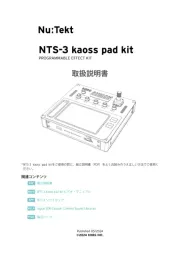
4 Februari 2025

27 Januari 2025

2 December 2024

2 December 2024

7 December 2023

19 Juni 2023

12 Juni 2023

11 Juni 2023

10 Juni 2023

1 Juni 2023
Handleiding DJ Gear
- Envivo
- Yamaha
- QTX
- Lenco
- Beyerdynamic
- Konig
- Martin
- Reloop
- Monkey Banana
- Vonyx
- ESI
- Sunstech
- IK Multimedia
- Headliner
- Serato
Nieuwste handleidingen voor DJ Gear
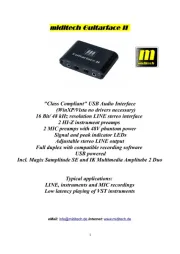
5 Augustus 2025
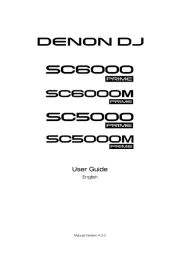
5 Augustus 2025
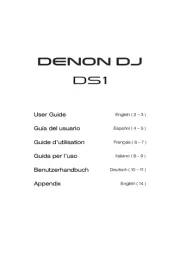
4 Augustus 2025
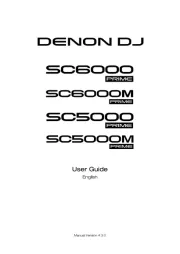
4 Augustus 2025
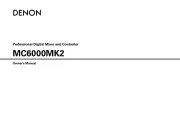
4 Augustus 2025
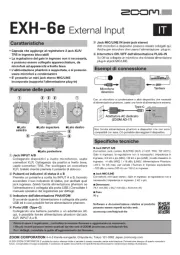
3 Augustus 2025

29 Juli 2025

29 Juli 2025

29 Juli 2025

28 Juli 2025